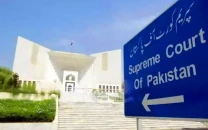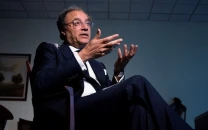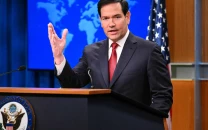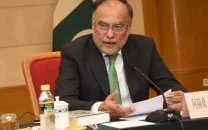America's gun violence crisis
.

The recent killing of three police officers, responding to a domestic assault in Pennsylvania, was not an isolated incident but part of a persistent national crisis. It followed several other acts of gun violence across the US, including a mass shooting at a Catholic school in Minneapolis in August, where two children and the perpetrator were killed and 30 others were injured. Another mass shooting in Alabama, killed two people and injured 12 in early October. Such instances of mass shootings serve as a stark reminder that in a country that remains awash with guns, no one is safe.
The deeper truth is that gun violence is not just a policy failure, it is a cultural crisis. Firearms are treated as symbols of individual liberty in America. Violence is also deeply woven into the American identity, reinforced by blockbuster movies and video games which glorify aggression and social media platforms that amplify sensationalised acts of violence, normalising fear and conflict as a natural part of everyday life.
State-sanctioned violence in the US is also amplified by widespread police firearm use. Law enforcers are heavily armed, and in the US, they are far more likely to encounter civilians with guns than in other rich countries.
The combined consequences of these above factors are deadly. Domestic disputes that might end in shouting matches in other countries often end in bloodshed in the US, where firearms are readily available in millions of households. More than half of all gun deaths are suicides, many of which could be prevented with safe storage, mental health interventions, or at least temporarily restricting firearm access for those in crisis.
About six in ten Americans support stricter gun laws, but political gridlock fueled by a powerful gun lobby and a literal interpretation of the Second Amendment right to bear arms has repeatedly blocked change. Groups like the National Rifle Association have turned gun ownership into a central marker of identity and freedom, framing any gun regulation as an attack on American values. As a result, the US has more guns than people. There are around 120 firearms for every 100 American residents. By comparison, Canada has about 35 guns per 100 people, Germany 20, and Japan fewer than 1.
The saturation of guns in the US translates directly into high rates of violent death: the American firearm homicide rate is about 26 times higher than in other high-income countries.
Despite these alarming statistics, many pro-gun advocates propose solutions that continue to deflect from the need to urgently reduce the number of firearms. Instead, they focus on 'fight fire with fire' type tactics, arguing for the need to help adapt society to the presence of an increasing number of guns. Suggestions by gun-rights advocates include installing metal detectors and providing armed security in schools and even allowing teachers to be armed themselves.
Such efforts imply that the answer is not fewer guns, but more of them in "responsible" hands. Such assertions show how deeply normalised gun culture has become in American life.
Gun violence is not inevitable. Evidence shows that strong firearm regulations can reduce deaths. States with stronger gun laws consistently have lower firearm death rates. Investments in mental health services, community violence prevention programmes and public education about gun safety can also save many lives. Also, changing the cultural narrative which no longer portrays guns as symbols of power and freedom is equally crucial.
The stakes could not be higher. Guns have now become the leading cause of death among children under 18 in the US, surpassing car accidents. These deaths disproportionately affect families of colour.
Mass shootings, though representing a small fraction of total gun deaths, now dominate public consciousness but still fail to produce sustained legislative change.
After every shooting, leaders urge the nation to "do better". But to do better means rejecting fatalism, confronting the cultural myths that glorify firearms and passing evidence-based laws that curb the rampant sale of firearms. Unfortunately, the political climate in America seems unlikely to take the steps required to avert further gun-related tragedies.















COMMENTS
Comments are moderated and generally will be posted if they are on-topic and not abusive.
For more information, please see our Comments FAQ